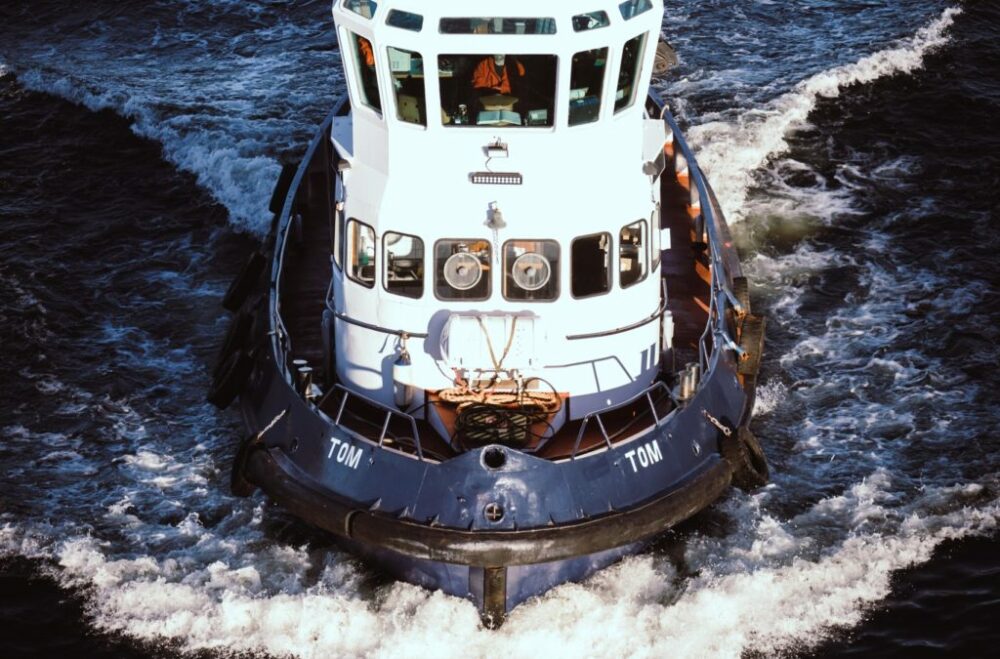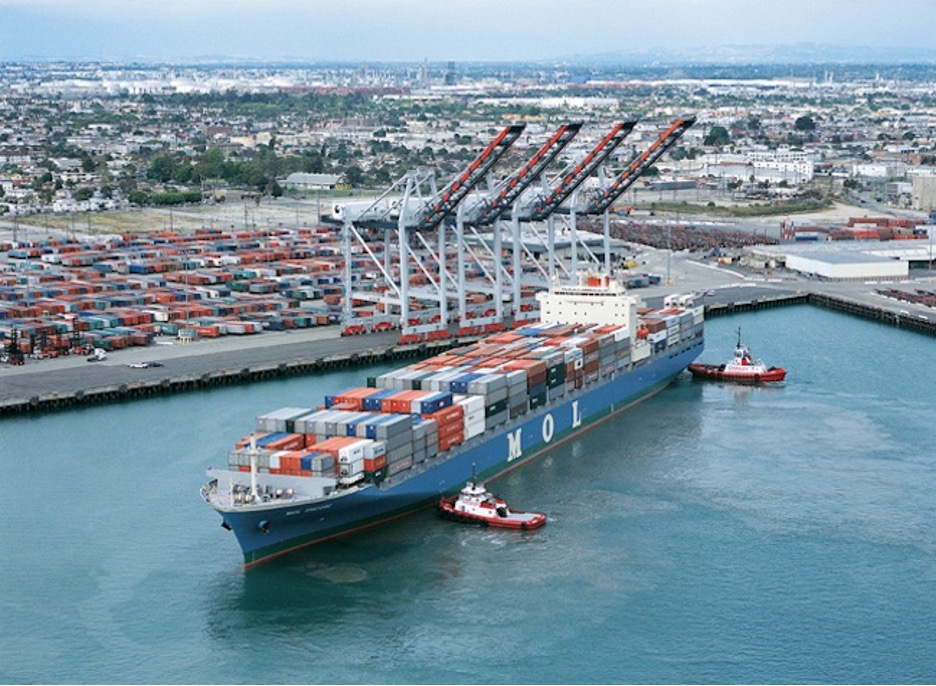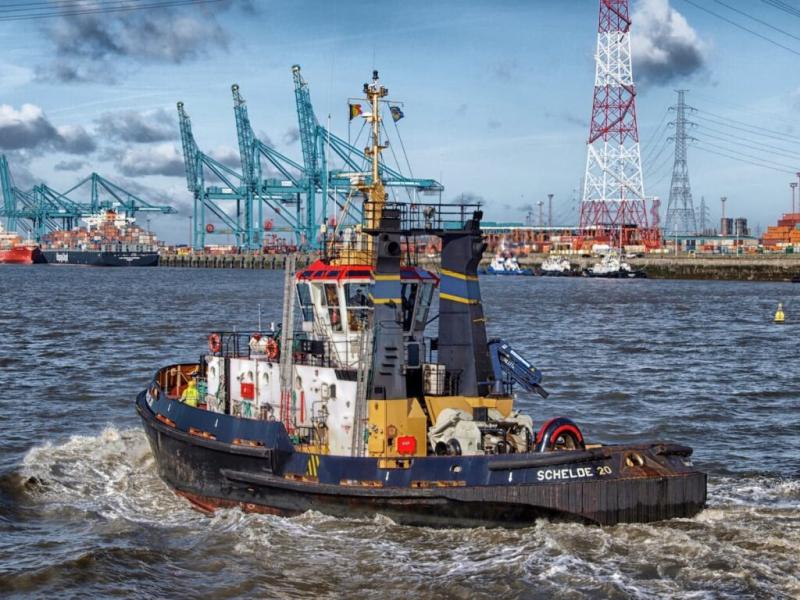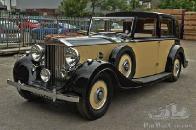Tugboats: The Unsung Heroes of the Shipping Industry
By: Dmitry (Maritime Page)

Tugboats: The Unsung Heroes of the Shipping Industry
Tugboats are a type of vessel that is primarily used for towing other ships and barges. They are commonly found in harbors, ports, and other waterways where large ships need assistance maneuvering in tight spaces or difficult conditions. These powerful boats are designed to provide the necessary force to move much larger vessels and are an essential part of the maritime industry.
Tugboats come in a variety of sizes and configurations, each with its unique capabilities and features. Some are designed for use in open water, while others are specifically designed for use in harbors and other confined spaces.
They can be powered by a variety of engines, including diesel, electric, and hybrid systems, and are often equipped with advanced navigation and communication technology to ensure safe and efficient operations.

Despite their important role in the maritime industry, tugboats are often overlooked by the general public. However, these hardworking vessels play a crucial role in ensuring the safety and efficiency of shipping operations around the world. In this article, we will take a closer look at the history, design, and uses of tugboats, and explore the many ways in which they contribute to the global economy.
History
Tugboats have been an indispensable part of maritime transportation for nearly 200 years. They maneuver larger watercraft in tight areas and tow unpowered vessels from port to port. In this section, we will explore the early development and modern developments of tugboats.
Early Development
The history of tug boats dates back to the early 19th century when steam-powered boats began to replace traditional sailing vessels. The first steam-powered tug boat, named Charlotte Dundas, was built in Scotland in 1801. It was used to tow barges along the Forth and Clyde Canal in Scotland.
In 1736, Englishman Jonathan Hulls patented a boat powered by a Newcomen steam engine to move large vessels in and out of ports and harbors. Hulls’ boat was never built, but it paved the way for the development of the tugboat.
The early tugboats were small, steam-powered boats used to tow barges and other vessels. They were primarily used in harbors and rivers. In the United States, the first steam-powered tugboat was built in 1818 by Robert Fulton. The boat was named the North River Steamboat or the Clermont.
It was used to tow barges on the Hudson River. By the mid-19th century, tugboats were becoming more common, and their use was expanding beyond just harbors and rivers.
Modern Developments
As technology advanced, so did the capabilities of tugboats. In the mid-20th century, diesel engines began to replace steam engines in tugboats. This allowed for more power and efficiency. Today, tugboats come in a variety of shapes and sizes and are used for a wide range of tasks. They are used to tow barges, assist larger ships in docking, and even to fight fires on the water.
Modern tugboats are equipped with advanced technology, including GPS and radar, to help them navigate and operate more efficiently. They are also designed to be more environmentally friendly, with many tugboats now using cleaner-burning engines and alternative fuels.
In recent years, there has been a trend toward developing autonomous tugboats. These self-driving boats could potentially reduce costs and improve safety in the maritime industry. However, there are still many challenges that need to be overcome before autonomous tugboats become a reality.
Types of Tugboats
Tugboats are small but powerful boats that are primarily used for towing and pushing other vessels. There are different types of tugboats based on their functionality and the environment they operate in. In this section, we will discuss the three main types of tugboats: Harbor Tugs, Ocean Tugs, and River Tugs.

Harbor Tugs
Harbor Tugs are the most common type of tugboat, and they are designed to operate in ports and harbors. They are typically smaller in size and have less power than ocean tugs. Harbor tugs are used for a variety of tasks, including moving cargo ships, barges, and other vessels around the harbor. They are also used for firefighting, pollution control, and other emergency services.
Harbor Tugs are usually equipped with a single propeller, which provides the necessary power to move the vessel and the towed vessel. They also have a towing winch, which is used to control the towline.
Ocean Tugs
Ocean Tugs are designed to operate in open waters and are larger and more powerful than harbor tugs. They are used for towing large cargo ships, oil rigs , and other vessels over long distances. Ocean Tugs are equipped with multiple propellers, which provide the necessary power to move the vessel and the towed vessel. They also have a towing winch, which is used to control the towline.
Ocean Tugs are classified into three types based on their size and power:
|
Type |
Length |
Power |
|
Small Ocean Tugs |
Less than 100 feet |
Less than 1,000 horsepower |
|
Medium Ocean Tugs |
100 to 150 feet |
1,000 to 5,000 horsepower |
|
Large Ocean Tugs |
More than 150 feet |
More than 5,000 horsepower |
River Tugs
River Tugs are designed to operate in rivers and other inland waterways. They are smaller and less powerful than harbor tugs and ocean tugs. River tugs are used for towing barges, dredging, and other tasks that require maneuverability in shallow waters.
River Tugs are usually equipped with a single propeller, which provides the necessary power to move the vessel and the towed vessel. They also have a towing winch, which is used to control the towline.
Tugboat Operations
Tugboats are designed to provide assistance to larger vessels in a variety of ways, including towing, pushing, and marine salvage operations . These operations require specialized knowledge and expertise to ensure safe and effective outcomes.
Towing
Towing is the most common operation performed by tugboats. Tugboats use a towing line to pull larger vessels, such as cargo ships or oil tankers, to their destination. The towing line is attached to a winch on the tugboat, which provides the necessary power to move the vessel. Tugboat operators must carefully consider the weight and size of the vessel being towed, as well as the weather and sea conditions, to ensure safe towing operations.

Pushing
Pushing is another operation performed by tugboats. Instead of using a towing line, tugboats push larger vessels, such as barges or other vessels without propulsion, to their destination. Tugboats can push vessels in a straight line, or they can use a technique called “hipping up” to push the vessel sideways. This technique is often used when navigating narrow or shallow waterways.
Salvage Operations
In addition to towing and pushing, tugboats are also used in salvage operations. Salvage operations involve recovering vessels that have run aground or are in distress. Tugboats can assist in these operations by providing additional power to move the vessel, stabilizing the vessel, and transferring crew and equipment to and from the vessel. Salvage operations require specialized knowledge and expertise to ensure safe and effective outcomes.
Tugboat Propulsion Systems
Tugboats are an essential part of the maritime industry, used for towing and pushing other marine vessels, and for assisting in port operations. Tugboats are equipped with a variety of propulsion systems, each designed to meet specific requirements.
Azimuth Stern Drive Tug
The Azimuth Stern Drive (ASD) tug is a popular choice for port operations and ship docking. The ASD tug has a propulsion system that consists of two or more azimuth thrusters, which can rotate 360 degrees, providing excellent maneuverability. The ASD tug is capable of both pushing and pulling operations and is ideal for berthing large vessels in confined spaces.
Conventional Tug
The conventional tug is equipped with a single propeller and rudder system. This type of tug is commonly used for towing operations between ports. The conventional tug has a high towing capacity and is capable of towing large vessels over long distances.
Tractor Tug
The Tractor tug is equipped with a propulsion system that consists of two or more Voith Schneider Propellers (VSP). The VSP system provides excellent maneuverability and is capable of both pushing and pulling operations. The tractor tug is commonly used in ship docking and port operations.
VSP Voith Schneider Propeller
The VSP system is a propulsion system that consists of a circular plate with vertically mounted blades. The blades can be tilted to provide thrust in any direction. The VSP system provides excellent maneuverability and is commonly used in tugboats and other vessels that require precise maneuvering.
Each type of tugboat propulsion system has its advantages and disadvantages. The choice of propulsion system depends on the specific requirements of the operation. Tugboat operators must carefully consider the requirements of each operation to select the appropriate propulsion system.
Tugboat Safety
Regulations
Regulations exist to ensure the safety of tugboats and their crew. The United States Coast Guard (USCG) sets these regulations, which include requirements for equipment and crew qualifications. Tugboats must have proper navigation and communication equipment , fire-fighting equipment, and life-saving equipment. Crew members must also have the necessary training and certification to operate the vessel and handle emergency situations.
The USCG also requires regular inspections of tugboats to ensure compliance with regulations. These inspections cover everything from the vessel’s structure and machinery to its safety equipment and crew qualifications. Tugboat owners and operators must maintain their vessels in good working order to pass these inspections.
Training
Proper training is essential for the safe operation of tugboats. Crew members must be trained to operate the vessel and handle emergency situations, such as fire or flooding. They must also be familiar with the vessel’s equipment and safety procedures.
Training programs for tugboat crew members include classroom instruction and hands-on experience. Classroom instruction covers topics such as vessel operations, navigation, and safety procedures. Hands-on experience includes training in vessel handling, towing, and emergency procedures.
In addition to initial training, crew members must also receive regular refresher training to maintain their skills and stay up-to-date with new regulations and technologies.
Overall, tugboat safety is a top priority for the USCG and the industry as a whole. Regulations and training programs help ensure that tugboats and their crew operate safely and effectively.
Tugboats in Our Lives
Each year, New York City hosts the Great North River Tugboat Race and Competition . This event, which has been held annually since 1994, brings together tugboats from around the region to compete in a variety of events, including a race up the Hudson River and a nose-to-nose pushing contest.
The event is a celebration of the important role that tugboats play in the maritime industry, and it provides an opportunity for the public to see these powerful vessels up close.
In addition to the races, the event also features tugboat tours, live music, and other family-friendly activities.
During the event, you may notice special attention from photographers and shipspotters taking pictures of tugboats. Shipspotting is a hobby that involves photographing and tracking ships and other vessels as they move through ports and waterways.
It is a popular hobby among maritime enthusiasts, and it provides an opportunity to learn more about the shipping industry and the vessels that operate within it. Shipspotters often gather at ports and other vantage points to photograph passing ships and record information about their size, type, and destination.
They may also use websites and apps to track the movements of specific vessels and share information with other enthusiasts. Shipspotting can be a fun and rewarding hobby, but it is important to remember to respect the privacy and safety of the vessels and their crews.
Shipspotters should always follow local regulations and guidelines, and should never interfere with the operations of the vessels they are observing.
Can tugboats go fast?
Tugboats are not designed for speed, but for power and maneuverability. They typically have a top speed of around 10-12 knots, but their primary function is to tow or push other vessels, not to travel quickly.
How are tugboats so powerful?
Tugboats are powerful due to their design and engine power. They have a short, wide, and deep hull that provides stability and maneuverability. They also have high-powered engines, often diesel, that allow them to generate a lot of torque and pull larger vessels.
How much does a tugboat cost?
The cost of a tugboat can vary greatly depending on its size, age, and condition. Small used tugboats can be purchased for less than $100,000, while larger, newer tugboats can cost millions of dollars.
How hard can a tugboat pull?
The amount of force a tugboat can exert, or its bollard pull, varies depending on the size and power of the tugboat. Smaller harbor tugs may have a bollard pull of a few hundred horsepower, while larger ocean tugs can have a bollard pull of over 100 tons.
Is it safe to use a tugboat?
Yes, tugboats are safe to use when operated properly and in compliance with regulations. The United States Coast Guard sets regulations for tugboats, including requirements for equipment and crew qualifications. Crew members must receive proper training in vessel operations, navigation, and safety procedures, and must receive regular refresher training to maintain their skills and stay up-to-date with new regulations and technologies.
About the author
Dmitry
I worked as an officer in the deck department on various types of vessels, including oil and chemical tankers, LPG carriers, and even reefer and TSHD in the early years. Currently employed as Marine Surveyor carrying cargo, draft, bunker, and warranty survey.
No politics, no religion, no instagrams, and commentary must be civil. The ToS and the CoC will be enforced, and anything that the administrator deems to be offensive will be deleted. YouTubes, videos and images that the administrator is unable to open must be described and explained or they will be deleted.







When one thinks about boats and ships, tugboats could be the last thing that comes to one's mind. But they are awfully important. A tugboat showed up as being a very important part of my favourite painting, The Fighting Temeraire, as it was towing the warship into dock. In the movie Sabrina, a tugboat was what took Humphrey Bogart to the French liner Liberte so he could join Audrey Hepburn on board. Here is all you need to know about tugboats.
Th tug is the workhorse of the shipping industry.
Think of them as you would think of the plain everyday working class hard working labourers. They are necessary.
Interesting article. Ports would not work without tugboats
Absolutely.